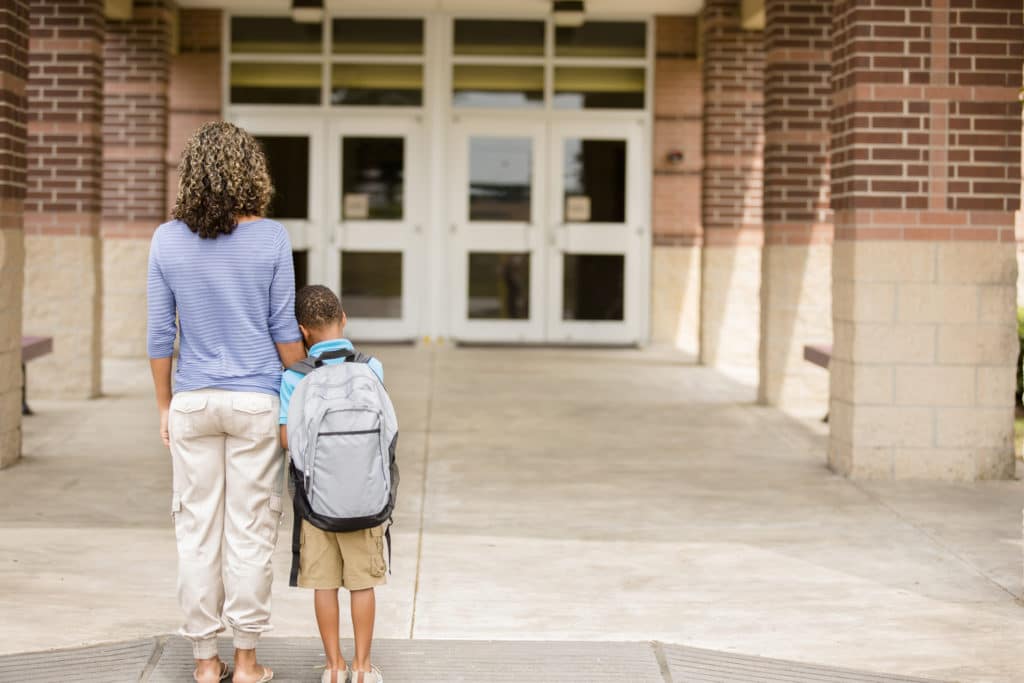Everyone experiences anxiety and low points from time to time, including children and teens. But when anxiety becomes excessive, it can disrupt normal function and learning and even require the support of a mental health professional. Similarly, consistent sadness or feelings of disinterest can be signs of depression, which puts kids at risk of self-harm.
Unfortunately, rates of anxiety disorders and depression are high among today’s youth. A whopping 30% of adolescents experience anxiety disorders, including generalized anxiety disorder and obsessive-compulsive disorder, in their lifetime. Almost 10% of today’s youth have severe major depression, and 13% have suffered at least one major depressive episode in the past year. Adverse mental health in youth at this scale requires intervention not only by parents and communities, but also—and perhaps most importantly—by schools.
The Growing Problem of Anxiety and Depression
Anxiety and depression rates in youth have increased over time, and they’re only being worsened by the COVID-19 crisis. Things like social isolation, interruptions in education, and both collective and individual trauma have all combined to raise rates of adverse mental health in students. And the return to in-person learning will add complications to the mix as students struggle to cope with learning loss and a return to school settings that may have changed dramatically.
The fact is that many students don’t have the necessary support in place to help them navigate stressors and other risk factors for mental illness. Both parents and communities are still rebuilding from the fallout of COVID-19, sometimes resulting in a lack of attention to today’s youth mental health right when they need it most. And according to a recent Navigate360/Zogby Strategies Public Safety and Security survey, 56% of teens say they know someone who’s considered self-harm or suicide—but only 32% believe their schools are prepared to handle the issue. As you know, school districts and government agencies are doing their best to respond to students’ needs, but it’s challenging to address such a wide variety of issues at such a large scale. That’s why an individualized approach is essential to adopt on a school-wide level.
Why an Individualized Approach is Necessary
There’s no one-size-fits-all way for schools to provide individualized attention to students. Every student is different, from their distinct mental health needs to how they respond to stressors. Consider the fact, for instance, that things such as development, temperament, and unique experiences are the foundation for students’ stress responses (according to the American Academy of Pediatrics). As a student services professional who deals with scores of different students each day, you see firsthand the variation in these attributes from student to student, leading to vastly different needs across the board.
It’s also essential to consider each student’s age, socioeconomic circumstances, race, and sexual orientation when addressing anxiety and depression on an individual basis. According to Mental Health America, Black individuals have had the highest average percent change over time for anxiety and depression, and Native Americans have had a similar correlation for suicidal ideation. And, of youth surveyed in 2020, almost 36% who reported experiencing frequent suicidal ideation identified as LGBTQ+.
It’s clear that students need individualized mental health support that addresses their needs as people, not just as students, as Dr. Crystal Ladwig says in the podcast episode How Districts are Supporting Social Emotional Learning (SEL) Needs Right Now. Investing in students as individuals this way pays off in the long term, leading to better outcomes in all areas of life. Taking the time to talk to students one-on-one, ask how they’re feeling, and address the ways they’ve been impacted by their experiences and COVID-19 is important for gauging individual needs.
It might seem difficult to provide this level of support for your students with your current resources. One thing you can do to help the process go more smoothly is to equip your student body as a whole with the tools they need to grow their own social-emotional learning (SEL) skills. With practice in social-emotional learning, students gain valuable skills in self-awareness and social awareness, both of which can help them feel more confident navigating their life experiences.
Why Social-Emotional Learning Matters
Students need to have their basic physical, social, and emotional needs met as individuals before they can truly thrive, and those needs have never been in greater deficit than they are today. The idea that our primary focus in schools should be on these needs before higher-order thinking goals and higher-level academic skills is called “Maslow Before Bloom.” This concept essentially describes that we need to put the horse before the cart, because students can’t thrive academically, socially, or otherwise while they don’t even have their basic needs met—needs which have expanded post-pandemic.
You’re not alone in addressing these needs for all students on a more holistic basis. Student services all across the country are grappling with these issues as well. And we at Navigate360 are here to provide our support in the form of comprehensive SEL curriculum that meets students where they are.
Our SEL Curriculum
While addressing social-emotional learning on an ad hoc basis is better than not doing so at all, a comprehensive, school-wide approach can make a much larger impact. That’s where Navigate360’s SEL curriculum, Suite360, comes in. Delivered digitally, our research-based, grade-specific courses help students improve on the Collaborative for Academic, Social, and Emotional Learning (CASEL)’s five core competencies—self-awareness, self-management, social awareness, relationship skills, and responsible decision-making, —all of which equip students to manage daily stressors and experiences that could lead to adverse mental health without them. Our SEL curriculum transforms necessary discipline into teaching moments, reducing stress and improving social, emotional, and academic outcomes across the board. When paired with individualized attention, our SEL curriculum can help students meet their basic needs, unlocking their future potential.
Together, we can help reduce anxiety and depression in our nation’s youth—one student at a time. To learn more about Suite360 or to ask any questions, don’t hesitate to schedule a consultation.
This article was originally published on Navigate360.com







